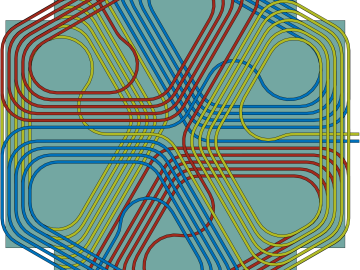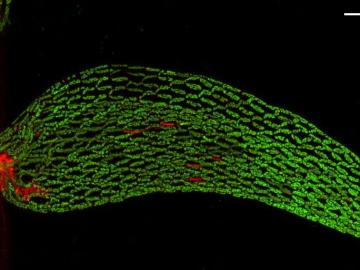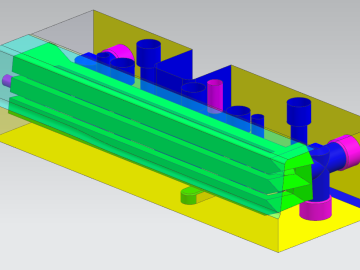
Filter News
Area of Research
- (-) Energy Science (73)
- (-) Materials (22)
- Advanced Manufacturing (11)
- Biology and Environment (21)
- Building Technologies (1)
- Computational Biology (1)
- Computational Engineering (2)
- Computer Science (6)
- Electricity and Smart Grid (1)
- Fusion and Fission (1)
- Fusion Energy (2)
- Isotopes (3)
- Materials for Computing (3)
- Mathematics (1)
- National Security (5)
- Neutron Science (7)
- Nuclear Science and Technology (3)
- Quantum information Science (1)
- Sensors and Controls (1)
- Supercomputing (14)
- Transportation Systems (2)
News Type
News Topics
- (-) 3-D Printing/Advanced Manufacturing (26)
- (-) Biomedical (2)
- (-) Chemical Sciences (4)
- (-) Environment (16)
- (-) Grid (15)
- (-) Isotopes (2)
- (-) Machine Learning (2)
- (-) Physics (2)
- (-) Space Exploration (3)
- (-) Transportation (27)
- Advanced Reactors (1)
- Artificial Intelligence (1)
- Big Data (1)
- Bioenergy (2)
- Biology (2)
- Biotechnology (1)
- Buildings (13)
- Clean Water (4)
- Composites (9)
- Computer Science (10)
- Coronavirus (3)
- Critical Materials (8)
- Energy Storage (22)
- Fusion (2)
- High-Performance Computing (1)
- Hydropower (2)
- Materials (22)
- Materials Science (23)
- Mathematics (1)
- Mercury (1)
- Microscopy (6)
- Molten Salt (1)
- Nanotechnology (8)
- Neutron Science (4)
- Nuclear Energy (4)
- Polymers (7)
- Quantum Computing (1)
- Quantum Science (1)
- Simulation (1)
- Statistics (1)
Media Contacts

Researchers at Oak Ridge National Laboratory developed a method that uses machine learning to predict seasonal fire risk in Africa, where half of the world’s wildfire-related carbon emissions originate.
An international team of scientists found that rules governing plant growth hold true even at the edges of the world in the Arctic tundra.

Oak Ridge National Laboratory researchers have developed a thin film, highly conductive solid-state electrolyte made of a polymer and ceramic-based composite for lithium metal batteries.

Researchers at Oak Ridge National Laboratory demonstrated a 20-kilowatt bi-directional wireless charging system on a UPS plug-in hybrid electric delivery truck, advancing the technology to a larger class of vehicles and enabling a new energy storage method for fleet owners and their facilities.

Researchers at ORNL demonstrated that sodium-ion batteries can serve as a low-cost, high performance substitute for rechargeable lithium-ion batteries commonly used in robotics, power tools, and grid-scale energy storage.

To better determine the potential energy cost savings among connected homes, researchers at Oak Ridge National Laboratory developed a computer simulation to more accurately compare energy use on similar weather days.

Researchers at Oak Ridge National Laboratory demonstrated that an additively manufactured polymer layer, when applied to carbon fiber reinforced plastic, or CFRP, can serve as an effective protector against aircraft lightning strikes.

ORNL researchers created and tested new wireless charging designs that may double the power density, resulting in a lighter weight system compared with existing technologies.

A team of scientists found that critical interactions between microbes and peat moss break down under warming temperatures, impacting moss health and ultimately carbon stored in soil.

Researchers demonstrated that an additively manufactured hot stamping die can withstand up to 25,000 usage cycles, proving that this technique is a viable solution for production.


